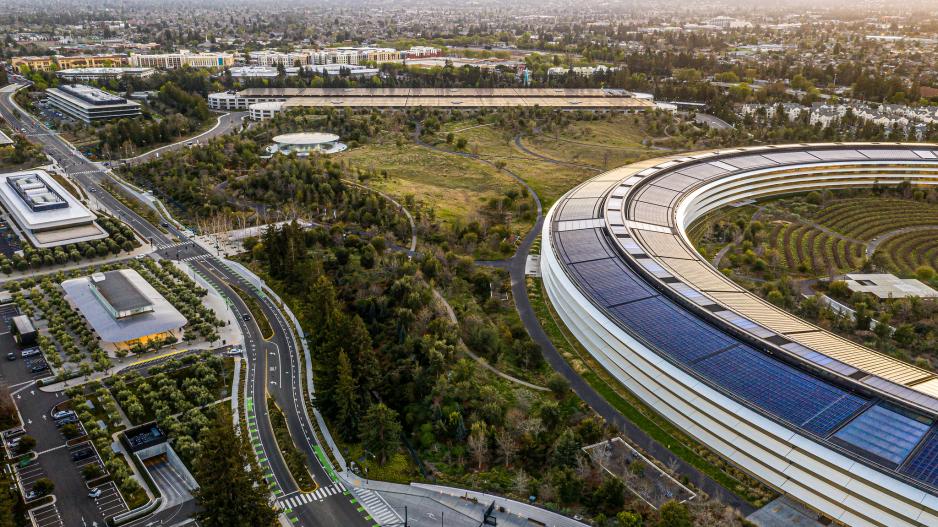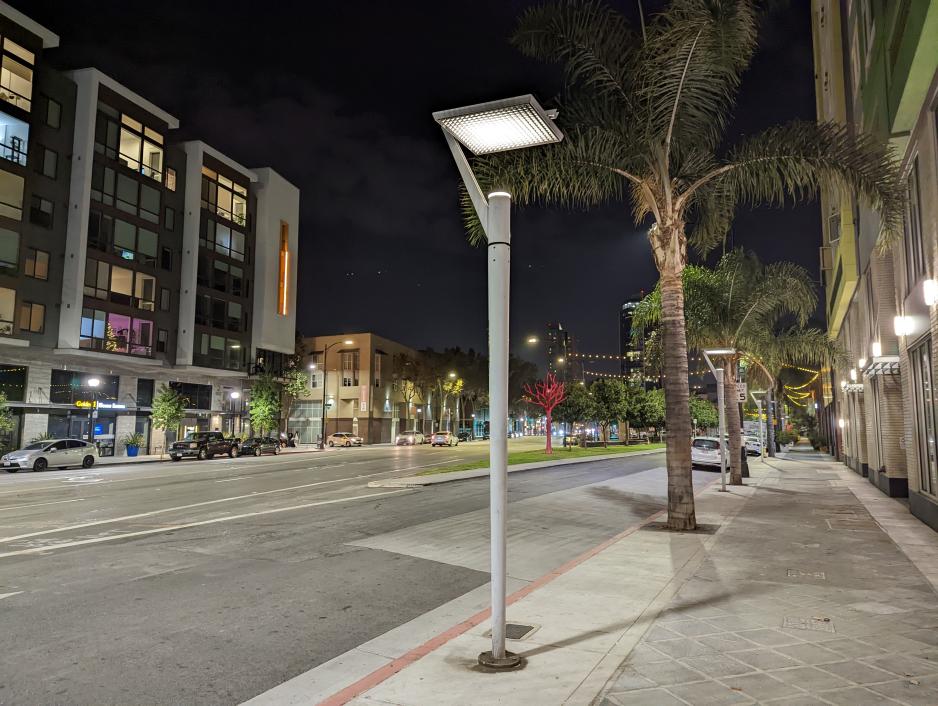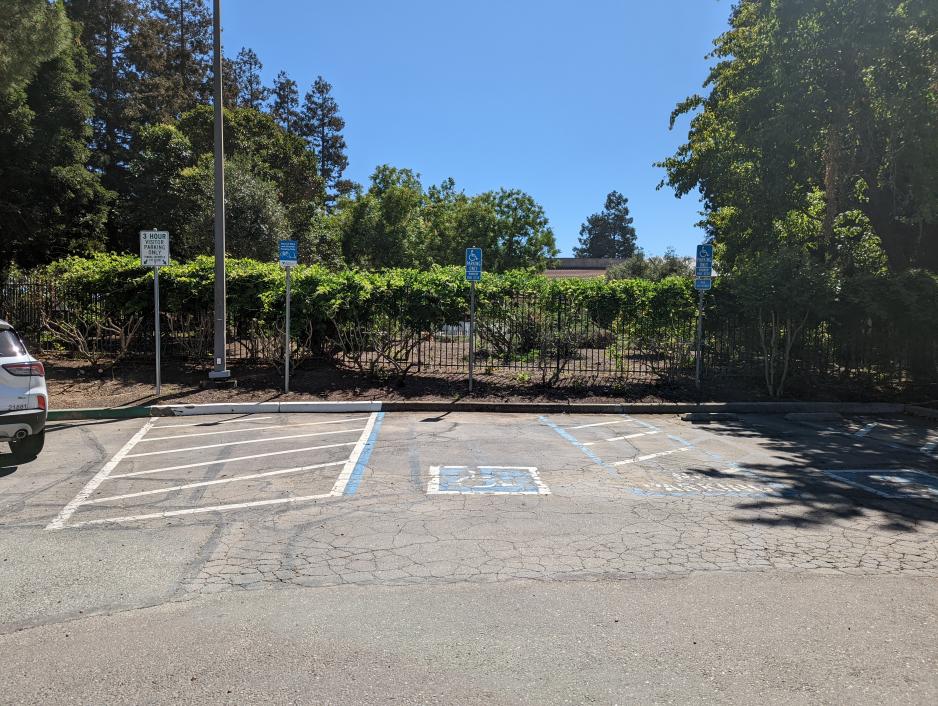Design parking to prioritize safety and pedestrian circulation by minimizing vehicle conflicts, providing adequate lighting, and adhering to ADA guidelines.
Orient and configure parking spaces to create a safe and convenient facility by enabling high-visibility backing movements and limiting unnecessary conflict points between vehicular, bicyclist, and pedestrian traffic.
- Minimize the number of pedestrian crossings of driveway aisles in off-street parking by aligning rows of parking spaces perpendicular to the facility it serves.
- Provide ample, notable, and simple signs and wayfinding within and at the exterior of the parking facility.
Illuminate parking facilities at recommended minimum average illumination levels used by the Illuminating Engineering Society (IES).
- Point lights downward to minimize light pollution and excess glare
Follow the American with Disabilities Act (ADA) Guidelines for Buildings and Facilities that requires a minimum number of accessible spaces be provided based on the total number of spaces included.
Consider that different adjacent uses warrant variations in parking design especially for entering and exiting, for example all-day use such as retail, compared to peak-hour use such as an office or sporting event.


